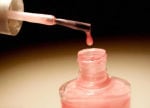Women whose bodies contain high levels of certain chemicals commonly found in personal care products, household items and some types of food packaging went into menopause two to four years earlier than women with lower levels of chemicals, according to a new study.
Researchers at Washington University School of Medicine in St. Louis analyzing the impact of exposure to 111 chemicals often found in common products and the environment discovered that 15 of the toxins possibly caused early menopause and reduced ovarian function.
“Chemicals linked to earlier menopause may lead to an early decline in ovarian function, and our results suggest we as a society should be concerned,” said senior author Amber Cooper, M.D., an assistant professor of obstetrics and gynecology, in a university interview. “Earlier menopause can alter the quality of a woman’s life and has profound implications for fertility and health.”
Reduced ovarian function may also affect fertility. Early menopause also increases a woman’s odds of developing heart disease, an illness that already has a devastating impact on the health of black women.
Recent research from the Black Women’s Health Study found that African-American women were likely to go into menopause slightly earlier than white women, especially if they smoked.
The Washington University study is the first to investigate the effect of exposure to a broad range of chemicals on menopause in a nationally representative sample of women. Researchers measured chemical levels in the bodies of 31,575 people, including 1,442 menopausal women.
Study participants were age 30 or older, with an average age of 61. All of the women had their ovaries. None of the participants were taking hormone replacement therapy, The group included African-American women as well as women of all income and education levels. The data was taken from the National Health and Nutrition Examination Survey, a study conducted by the Centers for Disease Control and Prevention (CDC).
Types of Chemicals Found
To measure the toxins, Cooper and her team assessed blood and urine samples from the study participants. Nine PCBs, three pesticides, two phthalates and furan (a toxic chemical) were associated with earlier ages of menopause and potentially reduced ovarian function.
111 Common Chemicals
Phthalates, found in nail polish and other common products, have been associated with possible disruption of the reproductive system. (Photo: Creative Commons)
Of the 111 chemicals surveyed, most were manmade. The list included:
- Dioxins/furans (industrial combustion byproducts)
- Phthalates (found in plastics, common household items, pharmaceuticals and personal-care products including chemical hair relaxers, lotions, perfumes, makeup, nail polish, liquid soap and hair spray)
- Phytoestrogens (plant-derived estrogens often found in plastics, pesticides and industrial chemicals)
- Polychlorinated biphenyls (PCBs, coolants)
- Phenolic derivatives (phenols, industrial pollutants)
- Organophosphate pesticides
- Surfactants
- Polycyclic aromatic hydrocarbons (combustion products).
Avoiding Toxins at Home
Cooper was careful to advise that the study does not absolutely prove that these chemical exposures cause menopause, but it raises a red flag and calls for more research.
While a cause-and-effect relationship has not been solidly established, the Washington University study is not the first to find an association between poor health and exposure to chemicals like phthalates (possible disruption of the reproductive system), furans (linked to liver damage and immune system suppression) and PCBs (linked to cancer). Furans have even been found in the umbilical cord blood of black infants.
Completely eliminating your exposure to every chemical is impossible, because they are found in soil, water and our food supply as a result of years of industrialization. The answer to living heathier lies in being careful about what you eat and the products you bring into your home. To get started:
▪ Avoid the dirty dozen. The Environmental Working Group (EWG) has compiled a list of the most dangerous avoidable pollutants we encounter in daily life and how to avoid them. It can teach you how to shop to reduce your exposure.
▪ Go skin deep. EWG has a database of more than 70,000 personal care products that can tell you how to find shampoos, soaps, cosmetics, baby care lines and tons of other products that are free of phthalates and other toxins. You may also consider a natural hair style as chemical relaxers most often contain phthalates. Or, try a phthalate-free relaxer like Phytospecific.
▪ Clean your kitchen. Teflon, aluminum and other types of cookware can release toxins at high heat, but thanks to new technologies, it’s easy to find safe pots and pans. This list will help you find new options.
▪ Rate your plate. Shop for organic, low-pesticide and hormone-free foods whenever possible. Avoid canned goods unless the label says the lining is free of Bisphenol A (BPA), it’s been linked to breast cancer. Also, use this database of more than 80,000 foods. It will tell you what types of chemicals and pesticides are in many fresh and processed foods.
The world is filled with toxins, so you will always have some level of exposure, but eating healthy and scaling-back on toxic cleaning products and cosmetics, can make a big difference.
Sheree Crute is editor-in-chief and co-founder of FierceforBlackWomen.com.










